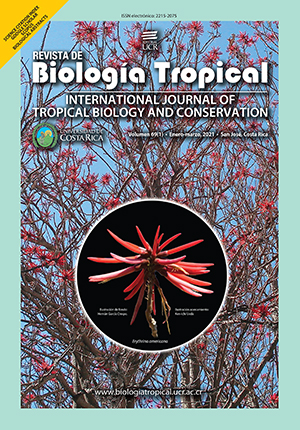Abstract
Introduction: The taphonomic attributes of a faunal assemblage provide information about which agents affect both, the distribution and preservation of ancient or newly-formed biogenic materials, during their depositional and post-depositional processes.
Thus, actuotaphonomy is a valuable tool to the reconstruction of fossil communities, as it establishes analogies between observable processes in the present and those that happened in the past.
Objective:The taphonomic attributes of a marginal marine environment were analyzed, in order to assess the origin of fragmentation, bioerosion and incrustation processes and the role of these characteristics in the deterioration of current sediment accumulations of mollusks (gastropods and bivalves), to generate an actuotaphonomic model that could be applyable to analogous ecosystems to Laguna de Mandinga (Mandinga Lagoon), in Veracruz, Mexico.
Methods: The material came from a shell-remain accumulation called "El Conchal". A batch of 1,697.9 g was processed, selecting 1,165 complete specimens, of which 5 genera of bivalves and 4 genera of gastropods were identified. Results: The taphonomic analysis showed that fragmentation and bioerosion have a medium attribute, which may be due to energy, constant rework and exhumation of the remains at the lagoon's water-sediment interface; three biogeneous agents were identified: Entobia isp, Oichnus and Caulostrepsi, being Caulostrepsi the less abundant. The incrustation showed of poor degree since the ecosystem intrinsic conditions did not allow many encrusting organisms to grow properly, however, these organisms are represented by calcareous tubes of serpulid polychaetes, bryozoans with calcareous skeleton and barnacles.
##plugins.facebook.comentarios##

This work is licensed under a Creative Commons Attribution 4.0 International License.
Copyright (c) 2021 Frank Raúl Gío Argáez


